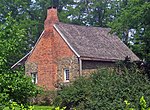Cementon, New York
Catskill Mountains, New York geography stubsCensus-designated places in Greene County, New YorkCensus-designated places in New York (state)Use mdy dates from July 2023
Cementon is a hamlet and census-designated place (CDP) in the town of Catskill in Greene County, New York, United States. It was first listed as a CDP prior to the 2020 census.The community is in the southeastern corner of Greene County, bordered to the east by the Hudson River and to the south by the town of Saugerties in Ulster County. U.S. Route 9W forms the western edge of the community, leading north 7 miles (11 km) to Catskill village and south 4.5 miles (7.2 km) to Saugerties village.
Excerpt from the Wikipedia article Cementon, New York (License: CC BY-SA 3.0, Authors).Cementon, New York
Pine Street,
Geographical coordinates (GPS) Address Nearby Places Show on map
Geographical coordinates (GPS)
| Latitude | Longitude |
|---|---|
| N 42.135833333333 ° | E -73.921944444444 ° |
Address
Pine Street 10
12414
New York, United States
Open on Google Maps



